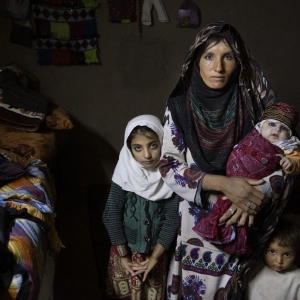Indikatoren in dieser Dimension analysieren, inwieweit Migrantinnen und Migranten hinsichtlich des Zugangs zu grundlegenden sozialen Diensten wie Gesundheit, Bildung und soziale Sicherheit den gleichen Status wie Bürgerinnen und Bürger haben. Es beschreibt die Rechte von Migrantinnen und Migranten auf Familienzusammenführung, Arbeit, Aufenthalt und Staatsbürgerschaft. Die Ratifizierung der wichtigsten internationalen Konventionen fällt ebenfalls in diesen Bereich.main.
Indikatoren in dieser Dimension bewerten die institutionellen, rechtlichen und regulatorischen Rahmenbedingungen der Länder im Zusammenhang mit Migrationspolitik. Dimension 2 beinhaltet auch das Vorhandensein von nationalen Migrationsstrategien, die mit Entwicklungspolitik und -ansätzen im Einklang stehen, sowie die institutionelle Transparenz und Kohärenz in Bezug auf Migrationsmanagement. In diesem Bereich wird auch untersucht, inwieweit Regierungen Migrationsdaten erheben und verwenden.
Diese Dimension konzentriert sich auf die Bemühungen von Ländern, in migrationsbezogenen Fragen mit anderen Staaten und einschlägigen nichstaatlichen Akteuren, einschließlich Organisationen der Zivilgesellschaft und des Privatsektors, zusammenzuarbeiten. Kooperation kann zu Verbesserungen der Regierungsführung führen, indem Standards angeglichen und angehoben, der Dialog intensiviert und Strukturen der Bewältigung von Herausforderungen geschaffen werden.
Diese Dimension umfasst Indikatoren für die Politik der Länder zur Steuerung des sozioökonomischen Wohlergehens von Migrantinnen und Migranten, z.B. die Anerkennung der Bildungs- und Berufsqualifikationen von Migrantinnen und Migranten, Bestimmungen zur Regelung der Studentenmigration und das Bestehen bilateraler Arbeitsabkommen zwischen Ländern. Die Indikatoren konzentrieren sich gleichermaßen auf Maßnahmen und Strategien im Zusammenhang mit dem Engagement der Diasporamitglieder und den grenzüberschreitenden Geldtransfers von Migrantinnen und Migranten
Diese Dimension befasst sich mit der Art und dem Grad der Bereitschaft von Ländern, wenn sie mit Mobilitätsdimensionen von Krisen konfrontiert sind, die entweder mit Katastrophen, der Umwelt und/oder Konflikten zusammenhängen. Die Fragen werden verwendet, um die Prozesse für Staatsangehörige und Ausländer sowohl während als auch Katastrophen zu ermitteln, einschließlich der Frage, ob humanitäre Hilfe für Migrantinnen und Migranten genauso verfügbar ist wir für Bürgerinnen und Bürger.
Diese Dimension analysiert den Ansatz der Länder zum Migrationsmanagement bezüglich Grenzkontroll- und Grenzschutzmaßnahmen, Zulassungsvoraussetzungen für Migranten, Vorbereitung und Flexibilität bei erheblichen und unerwarteten Wanderungsbewegungen sowie die Bekämpfung des Menschenhandels und des Menschenschmuggels von Migrantinnen und Migranten. Es werden auch die Bemühungen und Anreize zur Unterstützung der Integration der zurückkehrenden Staatsbürgerinnen und -burger bewertet.
This country Profile describes examples of well-developed areas of Republic of Palau’s governance structures and areas with potential for further development, as evaluated through the six domains of the Migration Governance Indicators (MGI). These address migrants’ rights, a “whole-of-government” approach, partnerships, socioeconomic well-being of migrants, the mobility dimensions of crises, and safe and orderly migration.
Click the icons on the wheel to explore the key findings.
The Migration Governance Indicators (MGI) initiative is a policy-benchmarking programme led by the International Organization for Migration (IOM) and implemented with research and analysis from the Economist Impact. Funding is provided by IOM Member States.
Migration Governance: examples of well-developed areas
- Palau's HealthCare Fund provides coverage for all regularly employed individuals, with mandatory contributions for both employers and employees.
- Palauan citizens residing abroad can vote in national elections as absentee voters by requesting a ballot through the Palau Election Commission.
- All children born in Palau receive birth certificates, irrespective of nationality, following jus sanguinis principles in Section 201 of the Citizenship and Immigration Act (1994, last amended in 2013).
Areas with potential for further development
- Palau does not offer permanent residency but allows individuals to apply for a resident visa, renewable without a specific limit, for a maximum period of two years per renewal.
- Only long-term residents and residents with family reunion permits and certain categories of residents with permanent work permits have access to social protection in Palau
- There is no specific strategy for addressing hate crimes, violence, xenophobia, and discrimination against migrants.
Migration Governance: examples of well-developed areas
- The Coordinated Border Management Working Group, established in 2022, is an inter-ministerial coordination mechanism that addresses migration issues and includes representatives from various ministries.
- The Bureau of Budget and Planning, under the Ministry of Finance, annually releases migration data that is disaggregated by sex and nationality.
- The census of Palau, conducted in 2020, included questions about migration, respondents’ citizenship and migrants’ reasons for migration.
Areas with potential for further development
- There is no single government department or agency solely responsible for designing, coordinating and implementing an overarching migration policy or strategic plan, or for enacting immigration policy.
- Palau does not currently have a national migration strategy defined in a programmatic document or manifesto. However, in October 2023, the Government initiated the process for the development of a national migration policy.
- There is no centralized, user-friendly government website for migration rules and regulations; information is scattered across platforms like Palau Visitors Authority, Ministry of Human Resources, and Palau Legal.
- Palau does not have a dedicated government entity for emigration and diaspora policy, along with specific legislation.
Migration Governance: examples of well-developed areas
- Palau actively engages in regional consultative processes such as the Pacific Immigration Development Community established in 1996 and the Bali Process established in 2022.
- Under the Compact of Free Association (COFA), Palau collaborates since 1994 with the United States to streamline immigration and combat human trafficking.
- Palau is a member of the Australian Government’s Pacific Engagement Visa programme, established in 2023, which provides a pathway for permanent migration and residence in Australia.
Areas with potential for further development
- The government collaborates on an ad hoc basis with the civil society organizations, private sector, and social partners in setting the migration agenda and addressing the associated issues
Migration Governance: examples of well-developed areas
- Palau's Bureau of Budget and Planning, under the Ministry of Finance, regularly publishes migrant worker data by sex and nationality in its Statistical Yearbook (last published in 2022).
- The Government of Palau has formalized criteria for recognizing foreign qualifications for some professions, such as teaching, medicine and law.
- As member of the Pacific Islands Forum, established in 1971, Palau engages in the Pacific Qualifications Framework (PQF) and the Pacific Register of Qualifications and Standards (PRQS) for the recognition and equivalence of qualifications.
- Palau's Division of Labor's Rules and Regulations (2019) includes provisions aimed at promoting ethical recruitment for migrant workers, addressing key issues such as minimum wage and living condition standards.
Areas with potential for further development
- The establishment of visas designed to attract specific labour skills is an area for development.
- The country does not conduct national assessments to monitor the labour market demand for migrants, the national labour supply or the impact of emigration on the domestic labour market.
- Palau has no specific mechanisms or measures to protect the rights of its nationals working abroad.
Migration Governance: examples of well-developed areas
- Palau actively engages in regional frameworks like the Pacific Regional Framework on Climate Mobility, Pacific Islands Forum, and the Nansen Initiative, focusing on climate-related migration and disaster risk management.
- The National Disaster Risk Management Framework entrusts National Emergency Management Office (NEMO) to manage crisis communication through media prioritizing timely messages for vulnerable communities.
- Palau installed early warning systems in the Ngaraard, Ngiwal, and Kayangel regions, enhancing disaster preparedness and response.
Areas with potential for further development
- The country’s emergency Management Framework lacks specific measures related to assisting migrants during crisis and post-crisis periods.
- There are no specific policies integrating human mobility into environmental and climate change strategies. However, the National Tsunami Support Plan (2015) designates evacuation zones for disasters.
- Palau does not have a contingency plan to manage large-scale population movements in times of crisis or strategies in place for addressing migratory movements caused by the adverse effects of climate change.
Migration Governance: examples of well-developed areas
- The Anti-Human Trafficking National Action Plan 2022–2025 includes specific measures on enforcement of laws in deterring and preventing human trafficking, victim protection, and coordinated government-community responses.
- Since the National Action Plan came into force, the Government started implementing the standard operating procedures (SOPs) for identifying victims of trafficking.
- Palau has measures to combat exploitation of workers, including provisions specifically for the protection of migrant workers with work permits.
Areas with potential for further development
- The establishment of a formal and regular training curriculum on migration is an area for further development.
- There are no specific government programmes or policies aimed at attracting nationals who have migrated from the country or facilitating their return.
- Palau’s Anti-Human Trafficking Unit publishes information about its counter-trafficking activities on adhoc basis.
2023 Oktober




